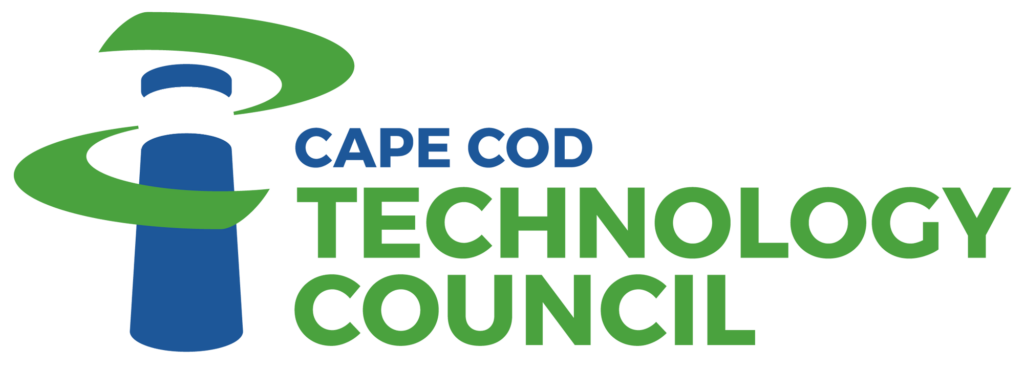 Ready to produce some content?
Ready to produce some content?
The October First Friday breakfast meeting was in Cape Cod Community Media Center‘s 8800 square feet of studio. They provide tools, training and technology to make it happen. What is “it?” That’s up to you. The Media Center is programming by community, for community. They also have a 2100 square foot warehouse that needs a non profit tenant (currently the Cape Cod Women’s roller derby league is practicing there!)
Our speaker, Jay Sheehan didn’t have far to travel, since he works part-time at the Media Center.
For his company, Garrett Audio, Jay travels the globe providing sound services. Garrett Audio specializes in providing sound for picture services, including location sound mixing, editorial services, foley and adr services, and mixing to picture. Jay’s client base is made up of the motion picture and television industries, documentary and independent media producers, as well as corporate entities. He has been a recording engineer and media content producer for over 18 years, working with some of the areas best talent among singers, songwriters, musicians, and artists at all levels.
Jay’s presentation for First Friday was, appropriately, video on the web.
Tape is dead, he says. Digital media is where it’s at. Many things are still backed up on tape, but manufacturers don’t want to make it anymore. Jay says even the Woods Hole Film Festival is moving to Blu Ray.
Why digital?
Digital video transfers easily, so you can get working right away with quick turn around times. The main disadvantage is that you have to be careful not to lose it. Make a backup copy! Today’s new school of video is to record and start editing right away. Then render your work to file, not tape.
Add to the list of things that are quickly becoming legacy: standard definition. The price of creating high definition digital media is dropping as it becomes even more ubiquitous. Depending on where you want to use the video, you can use anything from a high-end Codex camera to an iPhone or tablet.
A quick guide to Frame Rate (frames per second):
60 = tv
30 = corporate
24 = Film
If it looks more like a soap opera than a movie, Jay says, the frame rate is too high.
The bit rate is the amount of data being recorded. Use a higher bit rate for network-quality standards. Bit rates lower than 50 do not offer high enough quality. In response to a question, Jay clarified that higher end cameras need an external recorder – streaming out of the camera and onto a hard drive.
Distribution has also changed. People still use dvds, but QR codes are everywhere. Send people to your website or channel and there’s no dvd to lose. Channel choices incude YouTube and Vimeo.
The benefits of distributing through social media include cost and ubiquity. People now go to YouTube as a default when searching for something. If it’s content you want to sell, you don’t want to give it away on YouTube – even temporarily. Vimeo is also free, but there’s a paid version with faster load time and no ads. On both these channels, there are many features bundled in that facilitate sharing, and it’s cheap to do.
SEO
Your final data includes information, including a trancription, so your keywords and tags are not the only things coming up in the search. There are programs you can use to get a transcription of your video (they’re not perfect, but they help).
Terms of Agreement
Go through the policies. Check every six months to make sure you still know what you’re signing up for and agreeing to. With public/free distribution, you don’t necessarily retain the rights to your work. You still own it, but you give the channel ownership too. If you are not 100% sure you want your content up, don’t put it up. Deletion can be slow and incomplete.
Fair Use and Creative Commons
Do your homework. If you put your content on YouTube, people have the right to use it in their own work. You can choose whether or not to let people use it.
In addition to YouTube and Vimeo, which are free or cheap, there’s customizable infrastructure to be had for a range of rates from $100 to thousands of dollars a month.With customizable insfrastructure, you own your content, retain rights and have more control over the presentation.
Research the different platforms and put your videos where your target audience goes. YouTube is open to the community. Vimeo is more for producers of content, and leans toward higher quality content than generally found on YouTube. Blip.tv is appropriate if you make a series of shows (Hit & Run History is Jay’s project on Blip). Vine and Instagram are good for short videos taken with phones or tablets.
However you distribute video on the web, do keep people on your site whenever possible by embedding video. Or, have enough content to keep viewers on your channel once they’ve landed there.
These are all things that should be decided in advance. What do you want to do with your work? What’s the end product you have in mind?
Know what you want to do? It’s time to produce content:
- Have a pre-production meeting – meet the team and discuss concept, data and deadlines
- Production – shoot it!
- Post production – edit, add music and voice-overs
- Distribute – set your marketing plan in motion
Whatever your project, the Media Center is a great place to start. For $20 a year, you get certified on Media Center equipment. The only restriction is it can’t be a commercial project (you can do a related show, just can’t do a commercial to sell).
Ready? Now get to work.
November’s First Friday is with the Cape Cod Cranberry Growers Association. Because even cranberry growers require technology.
